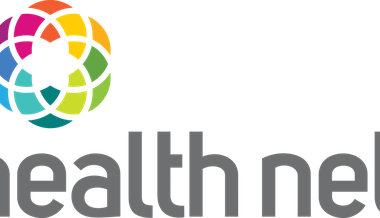Introduction:
Having proper health insurance makes a huge difference in accessing timely medical care without facing crushing costs when illness or injury strikes. However, with myriad options available, understanding key differences between policy structures can seem daunting. This comprehensive guide breaks down the most common types of medical coverage plans to empower informed choices. By learning features like included benefits, networks, costs, and enrollment procedures for each, you’ll gain crucial insights for selecting a health plan perfectly tailored to your situation and needs.
Let’s begin with an overview of two foundational insurance categories:
Managed Care Plans: Insurers form provider networks to coordinate care for lower premiums through preapprovals, referrals, and cost-sharing incentives.
Fee-for-Service Plans: Traditional indemnity coverage reimburses policyholders for any medical bills directly without utilization controls.
Mastering these high-level distinctions sets the stage to delve deeper into specific plant varieties.
Health Maintenance Organization (HMO)
An HMO is perhaps the most restrictive managed care model designed to maximize quality and savings. Key features include:
Exclusive In-Network Coverage: All medical care must be received from designated doctors/facilities within the HMO network to qualify for benefits (except emergencies).
Primary Care Physician Role: A PCP acts as a “gatekeeper” managing referrals for specialist visits, procedures, or hospitalizations.
Pre-Approval Requirements: Services may require pre-certification to confirm medical necessity before treatment to confirm coverage.
Low or No Deductibles: Plan copays apply for most visits/services rather than coinsurance.
Emphasis on Prevention: Primary/preventive care visits are fully covered, incentivizing proactive health management.
HMOs offer lower premiums in exchange for limited options—a good fit for healthy individuals prioritizing routine care coordination. Regional/employer availability varies.
Preferred Provider Organization (PPO)
A PPO gives more flexibility than an HMO at a higher monthly premium by:
In-Network Benefits: Lower copays, coinsurance, and deductibles apply for using designated providers.
Out-of-Network Coverage: Option to visit any provider, but pay more as the plan pays a percentage of allowed charges.
Referrals Not Required: No need for primary physician permission to see specialists or out-of-network doctors.
Individual Deductible: Must meet annual dollar amount before most in-network services are fully covered.
PPOs suit people willing to pay more for coverage choices while still incentivizing cost-effective in-network utilization. Widely accessible option.
High Deductible Health Plan (HDHP)
An HDHP pairs a higher deductible ($1,400-$7,050 self-only for 2023) with a Health Savings Account to qualify for:
Lower Premiums: Without extra services, HDHPs cost less upfront each month compared to others.
Health Savings Account: Saves tax-free towards deductibles and expenses when paired correctly. Rollover funds year to year keep growing.
Preventive Care Exemption: Checkups are fully covered before the deductible is met to encourage well visits.
Lower Cost Sharing: Copays or coinsurance after deductible versus regular plan’s upfront costs.
Good fit for young/healthy budgets wanting savings tools or higher deductible employers alongside supplemental coverage.
Point-of-Service (POS) Plan
A POS blends traits of HMOs and PPOs by featuring:
Tiered Benefit Levels: Can access any provider, but pay less in-network through tiered copays/coinsurance.
Referrals Not Required: For specialists/services within the network or out-of-network when choosing self-referrals.
Balanced Coverage Choices: Combines flexibility with financial incentives to stay in-network as a managed care option.
Moderate Premiums: Higher than HMOs due to flexible benefits but lower than total PPO out-of-pocket costs.
The trade-off between network obligation and premium costs makes POS plans appealing balanced choices for some.
Fee-for-Service Indemnity Plan
Indemnity plans operate outside managed care networks by:
Freedom of Provider Choice: See any doctor/facility, but pay more without discounts.
Deductibles and Coinsurance: High deductibles apply then percentage of allowed charges covered up to out-of-pocket maximums.
No Referrals Needed: Self-refer to specialists without permission or pre-approvals.
Higher Premiums: To cover full costs without utilization controls or negotiation discounts.
While providing total flexibility, costs are usually higher without coordination incentives. Now rare but was standard coverage model.
These overviews illustrate how plan structures both empower and obligate enrollees differently based on individual healthcare philosophies, network access needs, risk tolerances and budgets. Considering personal factors is key in selecting the ideal coverage type.
Employer-Sponsored Plans
In addition to choosing a health plan design, obtaining coverage may come through an employer offering a group health plan including:
Full Insurance Plan: Company fully pays premiums for employees (and sometimes dependents) wanting coverage through an HMO, PPO or POS.
Partial Coverage: Employer contributes set dollar amount towards premium costs while employees pay the difference for chosen plans.
Cafeteria (“Cafeteria”) Plan: Menu of benefits employees pick from to tailor coverage needs within law-mandated minimums/affordability thresholds.
Health Reimbursement Arrangement (HRA): Employer funds go towards deductibles/out-of-pocket maximums for employee-selected plans.
Flexible Spending Account (FSA): Pre-tax contributions pay qualifying medical/dental bills through reimbursement.
Understanding options secures valuable access to quality, budget-friendly group coverage and tax savings vehicles for many. Comparing bundled values aids enrollment decisions weighing premium splits, networks, benefits and savings opportunities. Group plans serve as essential risk pools nationwide.
Individual & Family Plans
For those without employer coverage or in eligible gaps, individual and non-group family marketplace plans provide security through:
Exchange/Marketplace Plans: Insurance exchanges offering plan selections under ACA guidelines. Post-tax credits available for middle-income individuals/families.
Direct Plans: Purchasing policies independently directly from insurers if incomes exceed tax subsidy eligibility.
Short-Term Limited Duration (STLD) Plans: Temporary individual coverage for transitional periods between major medical plans or employment gaps.
Catastrophic Plans: Only for those under 30 or with hardship exemptions, these very high deductible coverages help budget for major medical emergencies.
Careful comparisons mitigate risk of higher premiums or potential uncovered pre-existing conditions when relying solely on individual market plans instead of group coverage. Ongoing availability varies by state too.
Medicare and Medicaid
Special government healthcare programs aid specific populations facing medical access or affordability barriers:
Medicare: Federal health insurance for Americans 65+ and those with disabilities or ALS offering hospital (Part A), medical (Part B), prescription drug (Part D) and managed care (Part C/Medicare Advantage) plan options.
Medicaid: Joint federal-state program providing medical assistance to low-income individuals, families, seniors, and people with disabilities via direct coverage or managed care coordinating vendor arrangements. State-administered within broad federal guidelines.
Depending on personal circumstances like age, income, disability status and residency, qualifying for public program benefits secures vital coverage options ensuring access to care otherwise out of reach.
Comparing Coverage Needs
Determining the best insurance fit requires assessing individual/family healthcare needs like:
Chronic conditions requiring specialty care access
Upcoming surgeries, treatments or hospitalization risks
Regular prescriptions or therapy requiring coverage
Preferred doctors/facilities in-network satisfaction
Budget flexibility for premiums, copays or maximum protection
Thoroughly weighing options aids choosing plans providing most comprehensive coverage, lowest long-term costs, and granting access to preferred providers based on current and expected future medical care requirements.
The Bottom Line
Choosing the correct health insurance plan is crucial for navigating today’s complex system and securing affordable, appropriate coverage. While many options exist, understanding key distinctions between common plan structures empowers informed selections perfectly matching needs, risk tolerance, budget and enrollment circumstances. Whether obtaining individual, family, employer or public program coverage, conducting thorough research pays dividends in making enrollment, utilization and long-term affordability decisions centered around individual health priorities and situations. Ongoing education also prepares for any future life changes potentially impacting coverage eligibility or choices.





